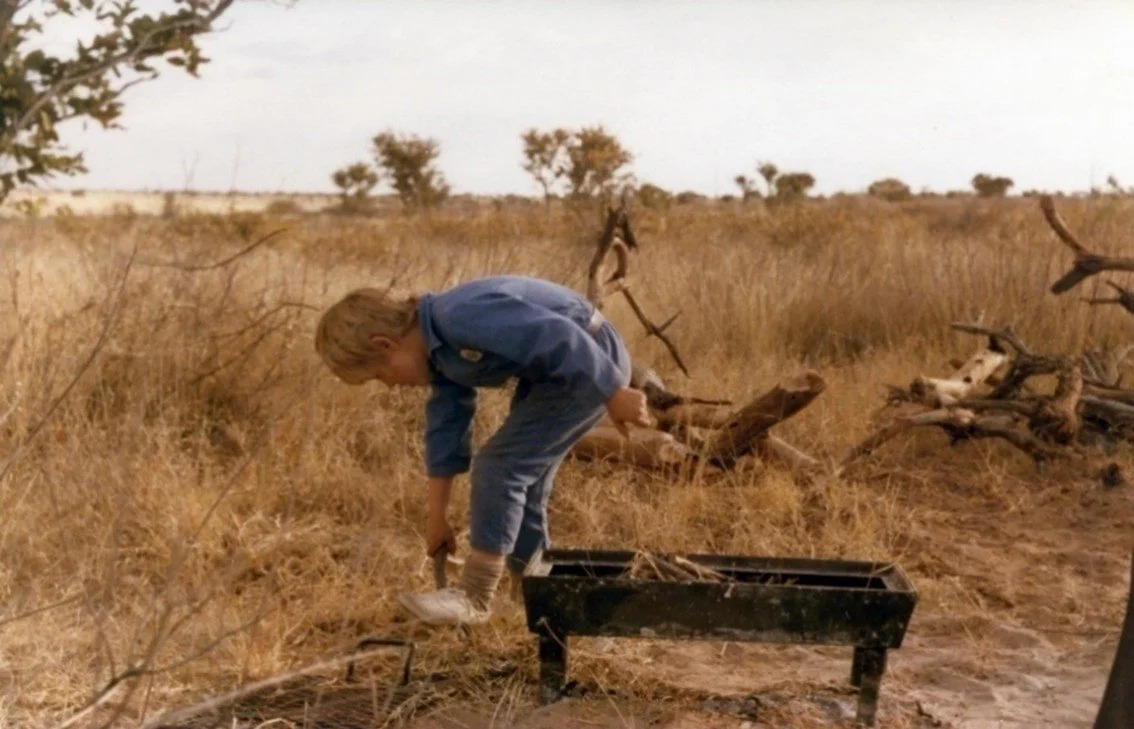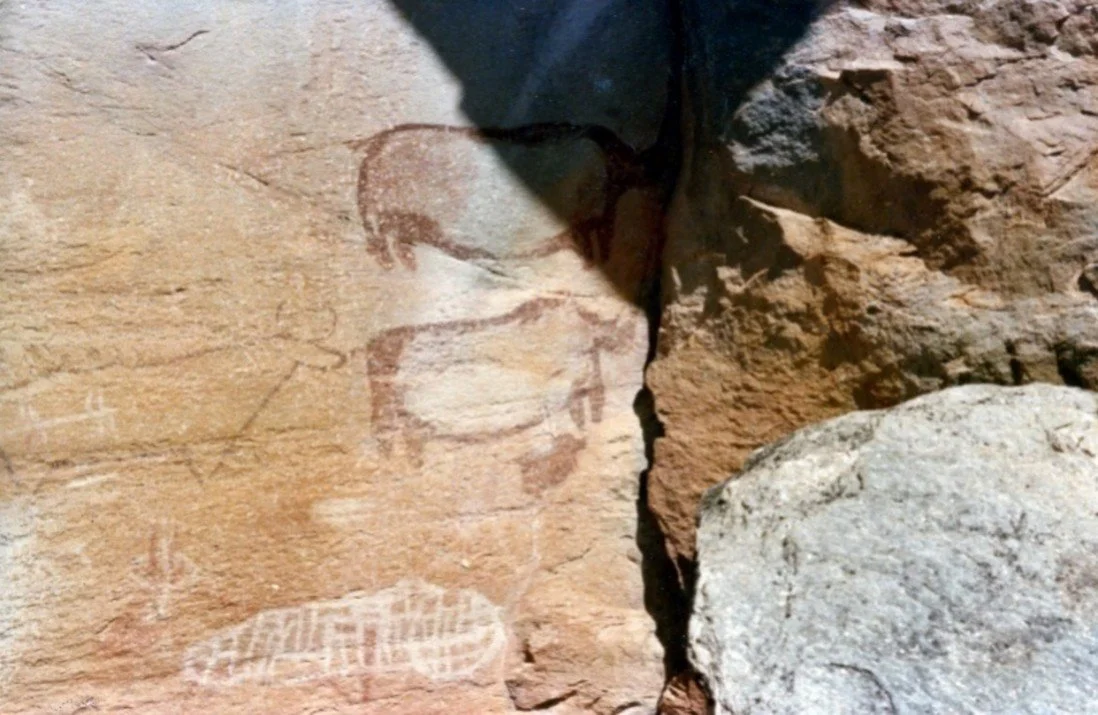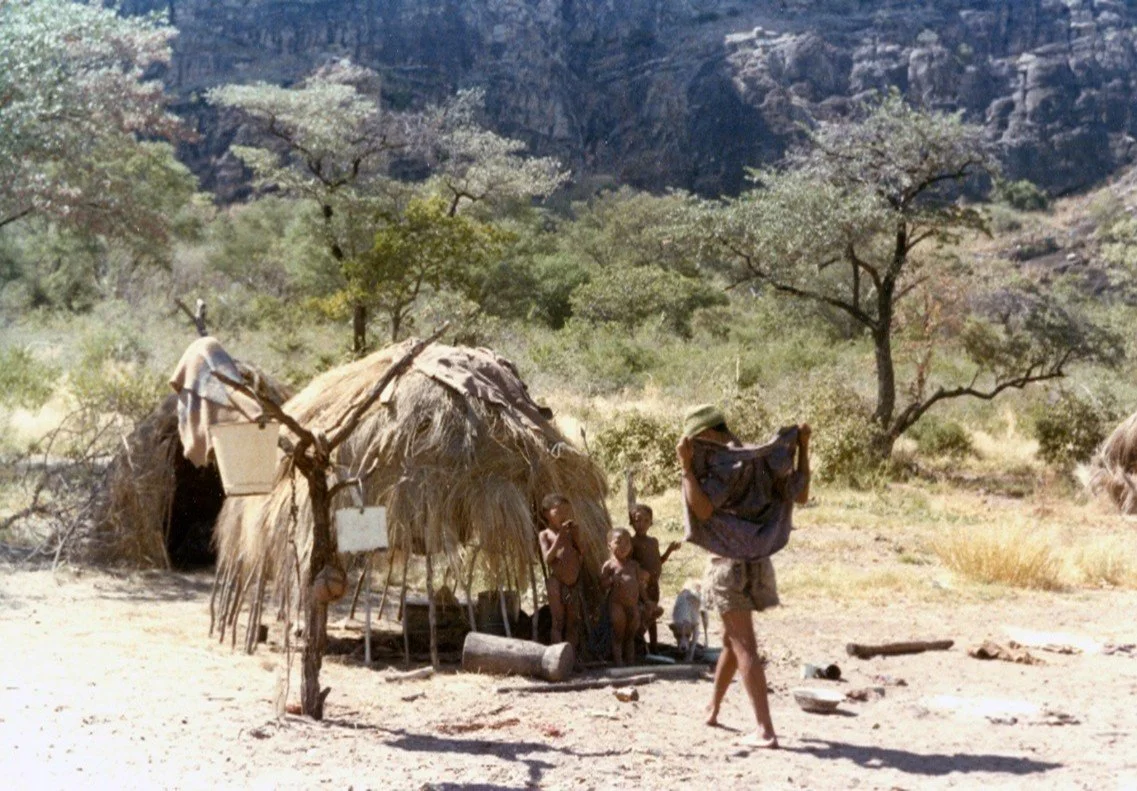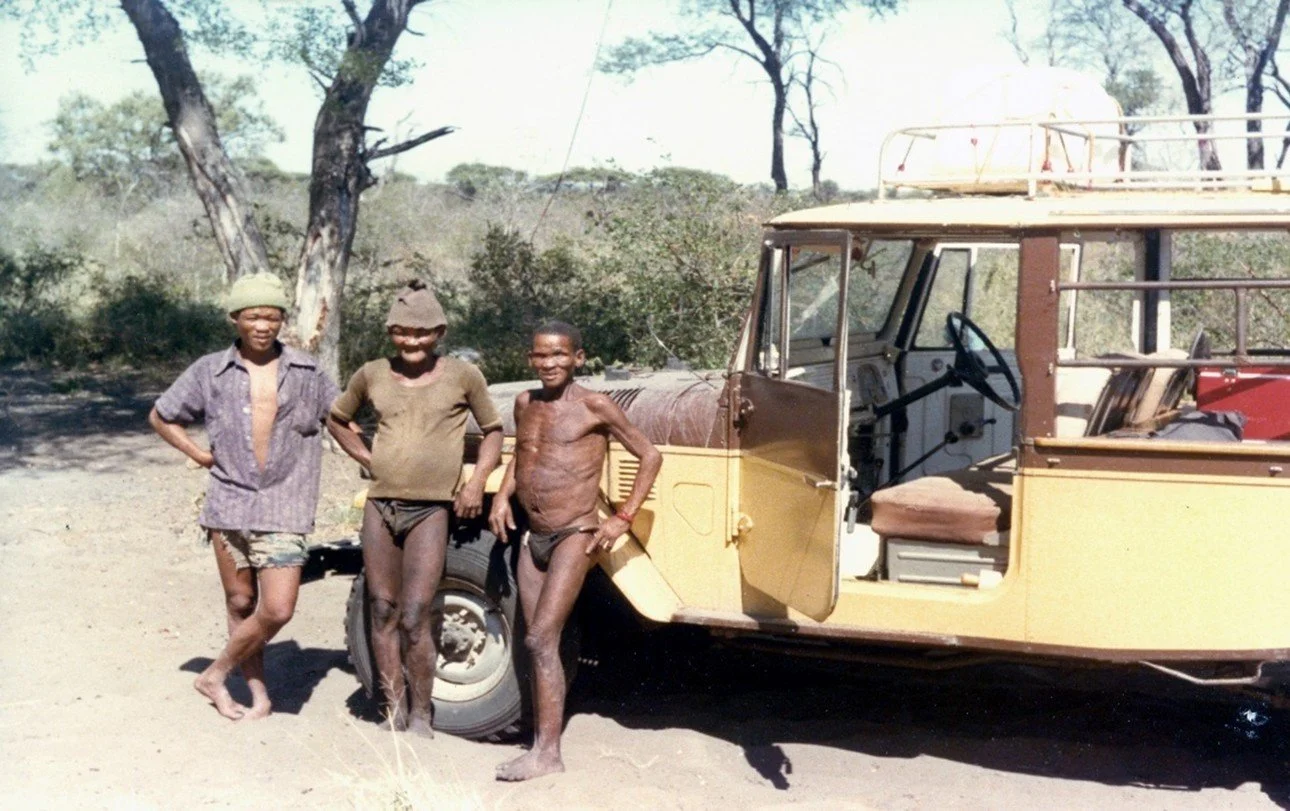San Paintings at Tsodilo Hills
In 1979, we had made our way across the Kalahari to Ghanzi in Western Botswana. We then went North past Lake Ngami to a fishing camp on the Okavango River, which flows into Botswana from Angola, just south of Shakawe.
One of the attractions of the area was and is the San paintings at Tsodilo Hills, west of the fishing camp. It took about two and a half hours to negotiate the forty kms over a track like I had never seen before. Apparently the authorities had engaged one of the locals who had been instructed to walk from the fishing camp directly to the paintings, which he did. So it was a straight line and people just cut the bush down all the way to the paintings. They didn’t do much else, in particular they left the tree roots as they were, otherwise the route would have just become a sandy track, unpassable at times, so one bounced from tree root to tree root.
Dougal collecting firewood
As we arrived near the site we came across a group of four or five San who rapidly discarded their western clothing, as they had been instructed to when visitors arrived. They all piled into the back of our vehicle singing ‘paintings, paintings’. They also brought what they had collected that day for the pot: honey and a porcupine they had killed.
We arrived at the site of a massive pile of rocks reaching high into the sky. Diana, me and the two elder kids, did our best to clamber up the rocks with the help and guidance of our guides. Kevin, aged four, was passed from hand to hand by the nimble footed San, right to the top. It is indeed a historical place with thousands of well-preserved paintings, mainly of animals, but with a few people too, going back into the mists of time. Well worth a visit. There is an airstrip there, which I guess is how most visitors access the site.
We arrived at the site of a massive pile of rocks reaching high into the sky. Diana, me and the two elder kids, did our best to clamber up the rocks with the help and guidance of our guides. Kevin, aged four, was passed from hand to hand by the nimble footed San, right to the top. It is indeed a historical place with thousands of well-preserved paintings, mainly of animals, but with a few people too, going back into the mists of time. Well worth a visit. There is an airstrip there, which I guess is how most visitors access the site.
Afterwards we took our guides back to their village, near the airstrip, where they kindly let us take some pictures.



